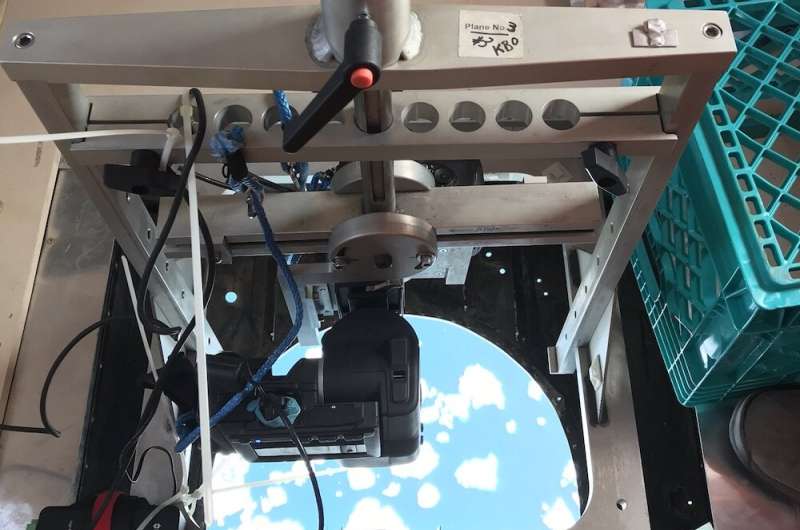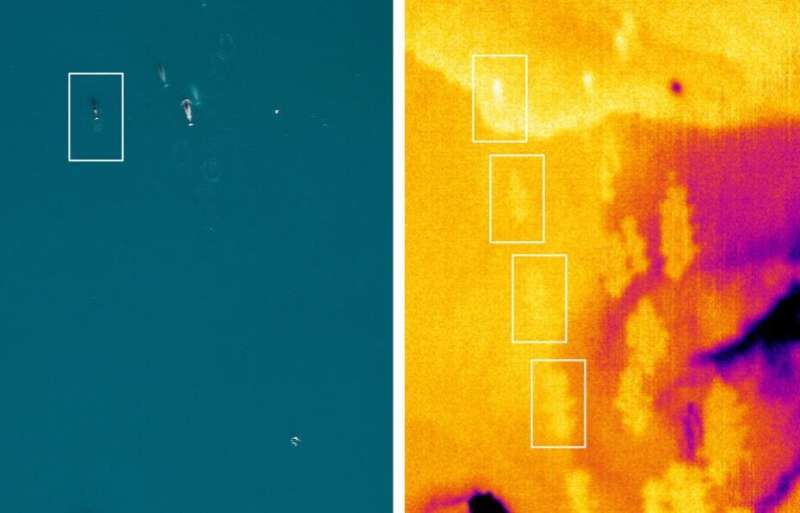How to spot the elusive narwhal

Finding animals in the wild can be tough, even for researchers with access to airplanes, high-end cameras and other costly gear.
Many animals blend with their surroundings or hide in places that human eyes can't reach. This is especially true of marine animals, who move under cover of water.
That's why researchers from the Institute for the Oceans and Fisheries (IOF), the University of Manitoba, and Fisheries and Oceans Canada were surprised when the infrared video camera they brought aboard their plane captured narwhals swimming off the coast of Ellesmere Island, Nunavut.
"We brought an infrared camera mostly to see if we could find walruses, seals, and polar bears on the ice, but when we looked at the infrared footage, we saw these narwhals swimming," said Katie Florko, a University of British Columbia Ph.D. student at the IOF and lead author of a newly published study about using infrared cameras to detect narwhals. "Narwhals only surface briefly, so we expected it would be challenging to accurately detect and count narwhals using infrared during our aerial surveys."
Infrared technology, which detects and visualizes heat, has limited ability to penetrate water. This constraint makes it difficult to spot the small, horned whales in their habitats—theoretically.

Although Florko and her colleagues didn't get a very clear picture of the narwhals' bodies, they did get a clear visual of something else: The narwhals' "flukeprints."
These whale "signatures" are created when water gets disturbed as the whales swim through it and create upwellings of different water temperatures. Recorded in infrared, the resulting image is a dancing, bright-hot painting with patterns of red, orange, yellow, purple and blue.
"We thought we'd only see the little bit of their back that appears when they surface," Florko said. "In hindsight, it's totally logical that you'd see the flukeprints when you have temperature-stratified water. This has been seen with bigger whales, but it never crossed my mind. I was shocked, excited, confused, and a bit embarrassed that I hadn't thought of it before."
The infrared camera recorded flukeprints that were much larger than the narwhals themselves and lasted longer than the short amount of time that whales surface. In addition to making narwhal detection easier, it indicated the direction in which the narwhals were headed.
The study, published in the journal Ecosphere, suggests that infrared be used as a tool to complement traditional photography when surveying animals. It can simplify the process of combing through visual data, and might provide additional detail about the animals' behavior.
"The creativity in science is really highlighted here," Florko said. "There are a lot of tools available to researchers that can be used in ways that they might not initially consider but give them surprising results."
More information: Katie R. N. Florko et al, Narwhal (Monodon monoceros) detection by infrared flukeprints from aerial survey imagery, Ecosphere (2021). DOI: 10.1002/ecs2.3698
Journal information: Ecosphere
Provided by University of British Columbia


















